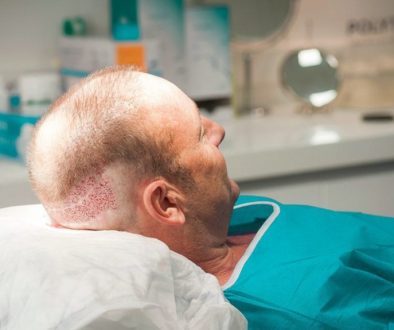Hair Transplant Postoperative Redness
This insightful article was written by forum discussion member “Spex” who is also a showcase for Dr. Feller of Great Neck, NY.
Postoperative Redness
Postoperative redness after a hair transplant can occur both in the recipient area and the donor area. The degree and length of time in which both areas will remain pink or red will largely depend on the individual’s skin tone and healing time. Redness in the recipient area occurs due to the presence of newly formed blood vessels and inflammation from the placement of the new follicular unit grafts.
Redness in the donor area occurs where the strip was removed and is basically a wound that will eventually heal. Once the wound has fully healed, the donor scar should appear as a pencil thin, white line that is difficult to locate provided the hair transplant surgeon skillfully applied the latest techniques when removing the donor strip and closing this area.
For individuals with a higher degree of hair loss, the redness will be more apparent than with those who are able to partially camouflage the area with existing hairs. It might help to get a slight tan (avoid burning) a few weeks prior to hair transplantation. After surgery and once the grafts have shed, cosmetic attempts can be made to mask the redness in the recipient area.
The hair surrounding the donor area can be cut as low as a #4 razor guard and still conceal the donor wound (once the staples/sutures are removed) depending on the thickness and density of the individual’s hair.
—
Bill
Associate Publisher of the Hair Transplant Network and the Hair Loss Learning Center
View my Hair Loss Weblog
Technorati Tags: hair transplant, recipient area, donor area, follicular unit graft, donor scar, hair transplant surgeon, hair loss, hair transplantation



